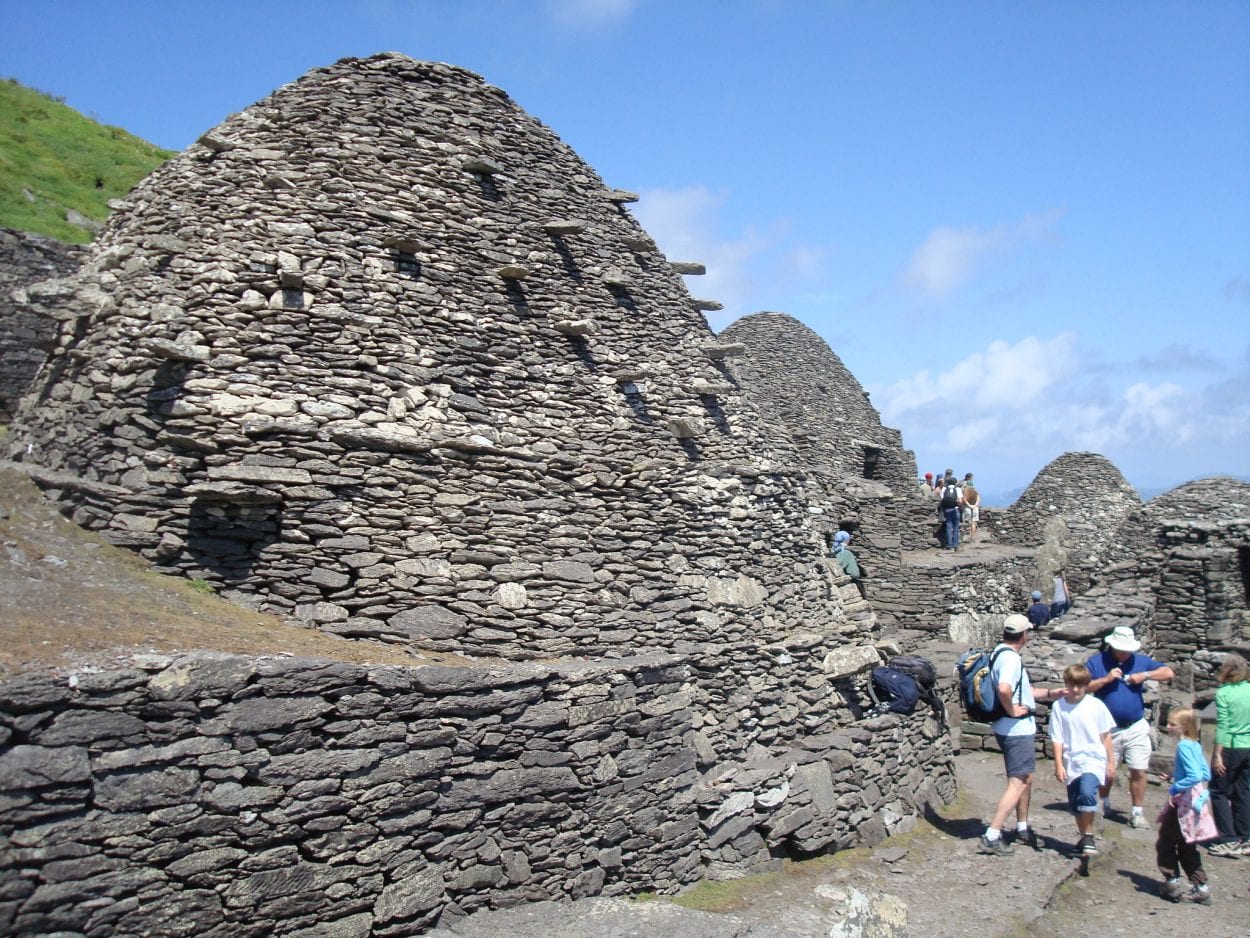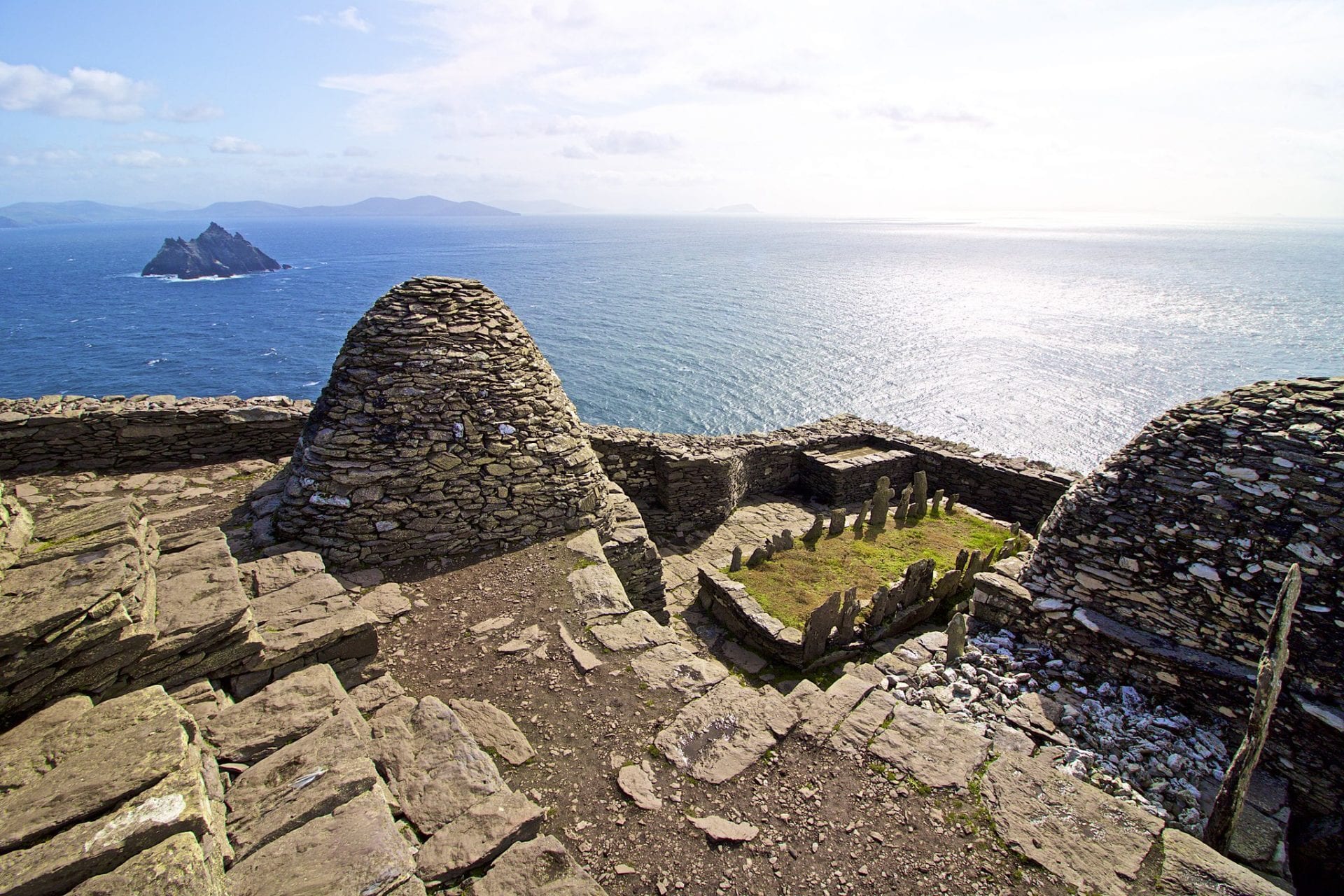Skellig Michael is an archaeological site and monastic settlement located on a twin pinnacle crag, off the coast of County Kerry in Ireland.
The island is the result of red sandstone and compressed slate that formed during the Devonian period around 360 and 375 million years ago. During the Hercynian, the topology of the landscape changed through a period of folding and mountain formation that left deep marine inlets as the sea levels rose, separating the island from the mainland.
The first reference of Skellig is more in legend than fact, it was reputed to be the burial place of Prince Ir, the fifth son of Milesius who drowned after his ship was driven upon the island and split on a rock around 1700 BC.
It is speculated that a monastery was founded on Skellig Michael during the 6th century AD, due to the remoteness and the abundance of rock for construction. Monasteries were sometimes built on remote locations to represent the Christian search for solitude (like a hermitage) to bring them closer to god and without temptations of the world.

The earliest definitive record mentions the monks on Skellig during the 8th century AD in a transcript about the death of ‘Suibhni of Scelig’. The Annals of Inisfallen, a chronicle of the medieval history of Ireland records that the site was subject to repeated Viking attacks from the year AD 824. The site was later dedicated to Saint Michael the Archangel sometime before 1044, with the death of “Aedh of Scelic-Mhichí” and the building of Saint Michaels’s church.
The monastery is laid out within an inner and outer enclosure located on a rock plateau some 180 m (600 ft) above sea level. It contains two oratories, a cemetery, crosses, cross-slabs, six clochán-type domed beehive cells (of which one has fallen) and a medieval church.
The cells and oratories are all of dry-built corbel construction, and the church, which was constructed at a later date, is of mortared stone. On the opposite side of the island below the south peak, a hermitage was built during the 9th century AD and comprises several enclosures and platforms situated on three main terraces cut into the rock.

The monks built three sets of stairs, that depending on the weather conditions allowed access to the monastery from the landing sites known as the East, South, and North Steps.
As there’s no freshwater supply on the island, a sophisticated method of water collection was built using two cisterns built within the inner enclosure of the monastery and a third a little to the west that collected water from the exposed bedrock during rainfall.
A study of the site estimates that no more than twelve monks and an abbot lived at the monastery at any one time and continuously occupied Skellig Michael until the late 12th or early 13th century AD. Skellig Michael remained in the possession of the Catholic Canons Regular until the dissolution of Ballinskelligs Abbey in 1578, a result of the reformation by Elizabeth I.
Header Image Credit : Tristan Reville – CC BY-ND 2.0





